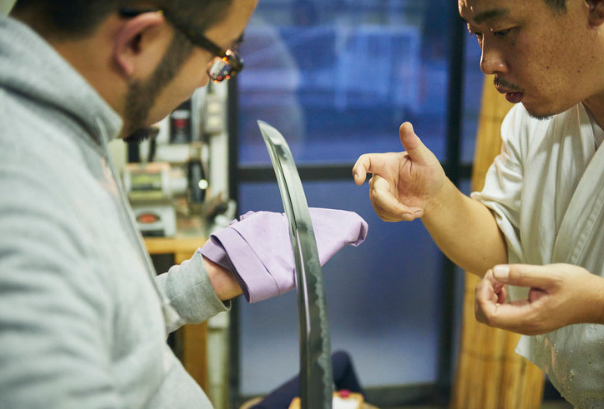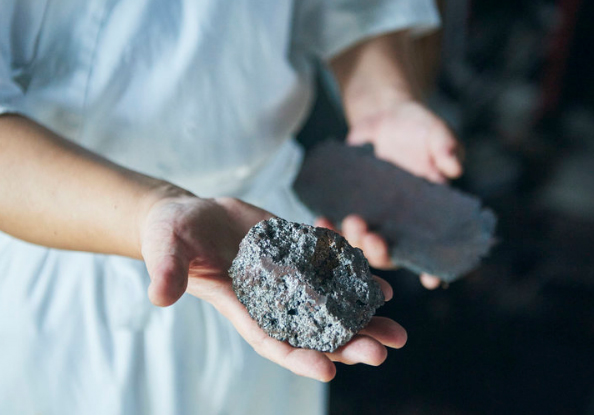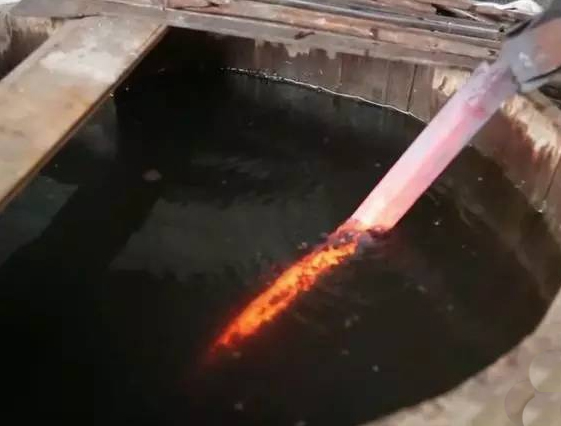How does the Japanese sword bend?
01 Mar


0 Comment(s)
4456 View(s)
The formation of each cold weapon has a certain relationship with the social history of the time. In the forging process of the Japanese sword, it was discovered that the scimitar was more suitable for cutting and more flexible. For the Japanese samurai, it was more powerful to use. .
While an arc-blade sword provides extremely effective cutting slashing, it may be too curved to perform precise and powerful assassinations; on the other hand, since it cannot provide cutting effects, if a straight-edged sword is to be slashed If it hits, its center of gravity should be at the front of the hilt, and it must have enough weight.

Steel
The same kind of steel, the same heat treatment medium, and the same temperature, even if the bending occurs, it is very small.
Before that, Romans and other civilizations used swords made of cast copper instead of forged bronze. The emergence of steel metallurgy opened up a whole new world of possibilities for swords and weapons. It is possible to forge steel swords without damaging or damaging the body, which is a feature that bronze swords do not have.
So, how exactly does the swordsman make the blade of the samurai sword slightly bend? Some people think that this is made by hammering, and the swordsmith uses a big hammer to hit the fiery blade until the desired curvature is reached. However, this is not necessarily correct.

Heat treatment (quenching)
The unique curved blade obtained by the katana is not forged but hardened. katanas are made by melting multiple layers of steel plates with different carbon contents. This reduces impurities and at the same time distributes the carbon content evenly throughout the blade. When creating these layers, the swordsman stretches and folds the steel layers to create steel blocks, and then shapes them into billets.
In the billet stage, the katana hardly bends. The curvature does not appear until the quenching process. Although the specific process varies, traditional Japanese swordsmen often apply clay to the blade(Clay Tempered). Next, he or she will place the blade on the forge. Therefore, the carbon is heated and fused into the steel. Then, the swordsmith will quench the blade in water or oil to cool it down.
Exposing the hot blade to cold oil or water-a process called quenching-results in rapid cooling, which causes the clay-coated steel to form a super strong material called martensite. Since the blade of the samurai sword is usually made thinner around the cutting edge, its heating and cooling rate is different from the rest of the blade. This slight difference in heating and cooling rates essentially results in different shrinkage rates. This is how the katana receives its curved blade.

Want a unique sword? Feel free to contact us:
Phone: 086 13739276006
Email: [email protected]
Website: www.hanbonforge.com
Custom Sword Page: www.hanbonforge.com/CUSTOM-SWORDS/Custom-Your-Own-Swords
Phone: 086 13739276006
Email: [email protected]
Website: www.hanbonforge.com
Custom Sword Page: www.hanbonforge.com/CUSTOM-SWORDS/Custom-Your-Own-Swords

Leave a Comment